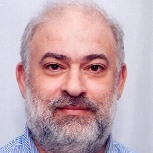Advances in Low-Frequency Noise Measurements
A special issue of Electronics (ISSN 2079-9292). This special issue belongs to the section "Circuit and Signal Processing".
Deadline for manuscript submissions: closed (31 January 2022) | Viewed by 13408
Special Issue Editor
Special Issue Information
Dear Colleagues,
Low-frequency noise measurements are widely recognized as one of the most sensitive tools for the investigation of the quality and reliability of electron devices and systems. The fluctuations that are recorded at the ends of a biased device carry information about the interaction of the charge carriers with the detailed microstructure of the device, and important information about conduction mechanisms in new devices can be obtained from measuring noise. Moreover, it has been suggested that the observation of the noise generated in sensing devices can be used to increase the sensitivity and selectivity of sensors. Notwithstanding the huge amount of scientific literature on the subject, the fundamental mechanisms leading to the generation of low-frequency noise are not fully understood, even in mature devices. With the continuous introduction of new active materials and new advanced devices, being able to measure, characterize, and, possibly, identify the main factors affecting noise in a given technology is of paramount importance. On the one hand, investigating low-frequency noise can provide clues for a deeper understanding of the conduction mechanism in exotic materials and devices; on the other hand, understanding noise origin is a key factor for introducing process changes aimed at increasing the signal-to-noise ratio in emerging technologies.
This Special Issue focuses on the latest advances in the field of low-frequency noise measurements, with a particular focus on experimental results relating to new and advanced electron devices, applications in the field of quality and reliability, measurement methodologies, and dedicated instrumentation. Topics of interest include, but are not limited to, the following:
- Low-frequency noise in electron devices and circuits;
- Low-frequency noise in advanced materials;
- Low-frequency noise in optical devices;
- Low-frequency noise measurement methodologies and instrumentation;
- Application of low-frequency noise to the evaluation of the quality and reliability of electron devices and systems;
- Low-frequency noise simulation and modeling.
Prof. Carmine Ciofi
Guest Editor
Manuscript Submission Information
Manuscripts should be submitted online at www.mdpi.com by registering and logging in to this website. Once you are registered, click here to go to the submission form. Manuscripts can be submitted until the deadline. All submissions that pass pre-check are peer-reviewed. Accepted papers will be published continuously in the journal (as soon as accepted) and will be listed together on the special issue website. Research articles, review articles as well as short communications are invited. For planned papers, a title and short abstract (about 100 words) can be sent to the Editorial Office for announcement on this website.
Submitted manuscripts should not have been published previously, nor be under consideration for publication elsewhere (except conference proceedings papers). All manuscripts are thoroughly refereed through a single-blind peer-review process. A guide for authors and other relevant information for submission of manuscripts is available on the Instructions for Authors page. Electronics is an international peer-reviewed open access semimonthly journal published by MDPI.
Please visit the Instructions for Authors page before submitting a manuscript. The Article Processing Charge (APC) for publication in this open access journal is 2400 CHF (Swiss Francs). Submitted papers should be well formatted and use good English. Authors may use MDPI's English editing service prior to publication or during author revisions.





